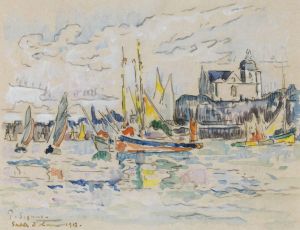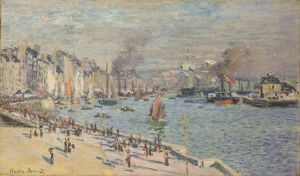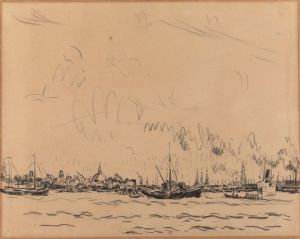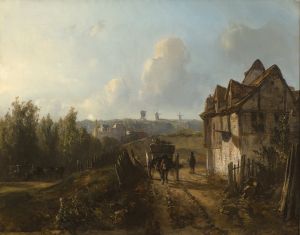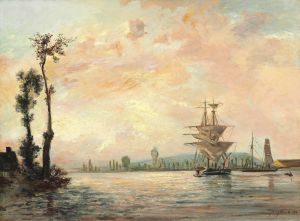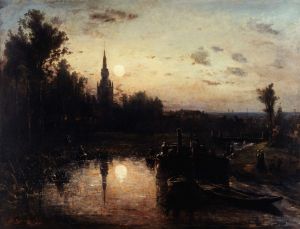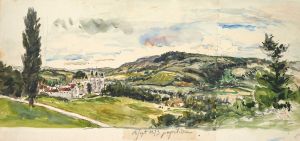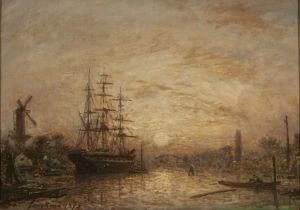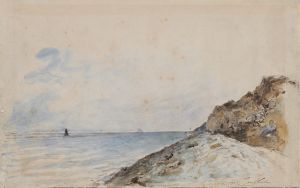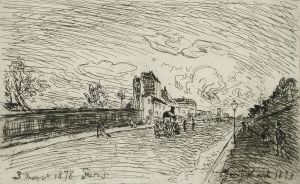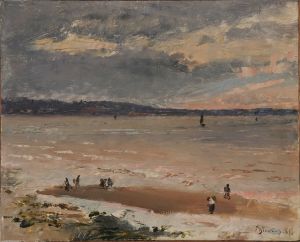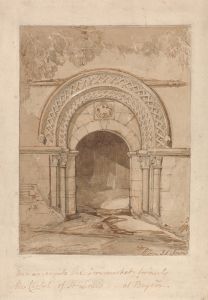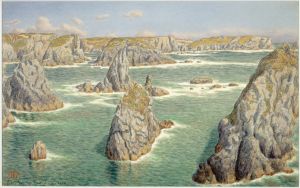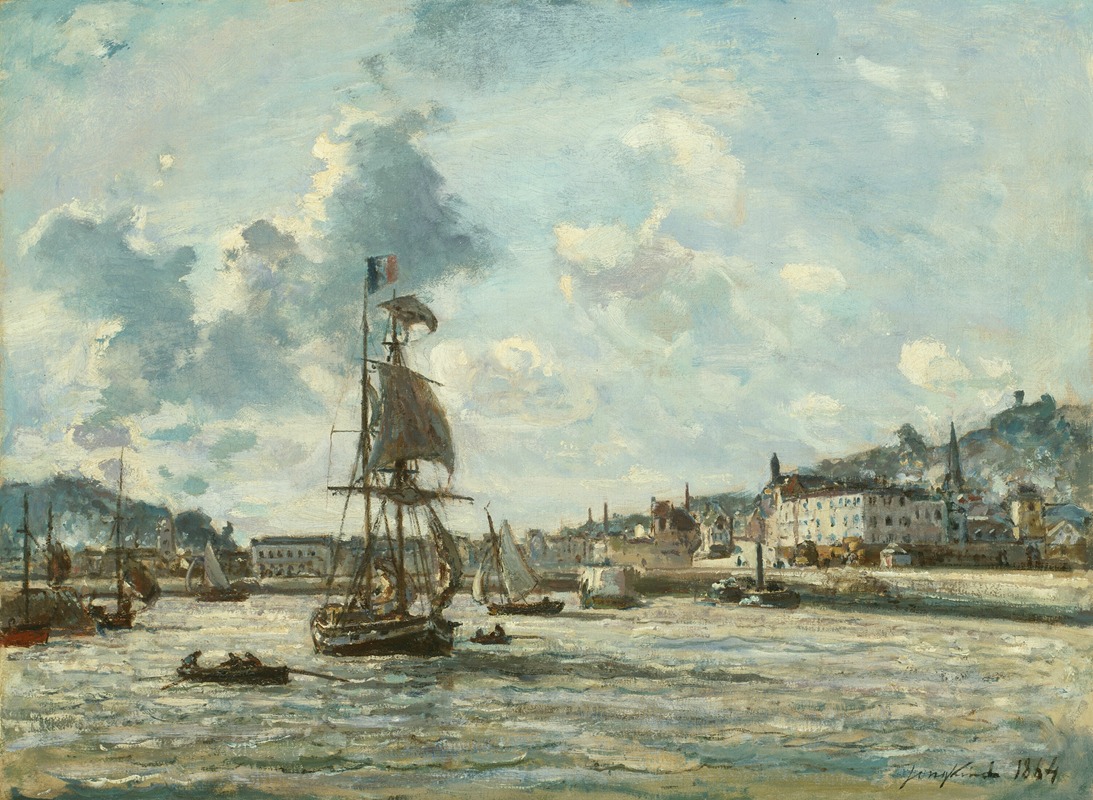
Entrance to the Port of Honfleur
A hand-painted replica of Johan Barthold Jongkind’s masterpiece Entrance to the Port of Honfleur, meticulously crafted by professional artists to capture the true essence of the original. Each piece is created with museum-quality canvas and rare mineral pigments, carefully painted by experienced artists with delicate brushstrokes and rich, layered colors to perfectly recreate the texture of the original artwork. Unlike machine-printed reproductions, this hand-painted version brings the painting to life, infused with the artist’s emotions and skill in every stroke. Whether for personal collection or home decoration, it instantly elevates the artistic atmosphere of any space.
"Entrance to the Port of Honfleur" is a painting by the Dutch artist Johan Barthold Jongkind, created in 1866. Jongkind is renowned for his significant contributions to the development of Impressionism, and his works often depict landscapes and marine scenes with a focus on light and atmosphere. This particular painting exemplifies his skill in capturing the essence of a location through his unique artistic style.
Johan Barthold Jongkind was born on June 3, 1819, in Lattrop, Netherlands. He studied at the Academy of Fine Arts in The Hague and later moved to Paris in 1846, where he became associated with the Barbizon School. His interactions with artists such as Eugène Isabey and François-Edouard Picot influenced his early works. Jongkind's style evolved over time, and he became known for his plein air painting technique, which involved painting outdoors to capture natural light and colors.
"Entrance to the Port of Honfleur" depicts the bustling maritime activity at the port of Honfleur, a town located in the Normandy region of France. Honfleur was a popular subject for many artists during the 19th century due to its picturesque harbor and vibrant atmosphere. Jongkind's painting captures the dynamic interaction between the sea and the sky, with boats and ships navigating the waters as they enter the port.
The composition of the painting is characterized by Jongkind's use of loose brushwork and a subtle color palette, which effectively conveys the movement and fluidity of the scene. The sky is depicted with soft, diffused clouds, suggesting a gentle breeze and the ever-changing weather conditions typical of coastal regions. The water reflects the sky's hues, creating a harmonious balance between the elements.
Jongkind's ability to depict light and its effects on the environment is a hallmark of his work. In "Entrance to the Port of Honfleur," he skillfully captures the play of light on the water's surface and the reflections of the boats, enhancing the sense of realism and immediacy. This attention to light and atmosphere would later influence Impressionist painters such as Claude Monet, who admired Jongkind's innovative approach to landscape painting.
Throughout his career, Jongkind remained dedicated to exploring the nuances of natural settings, often revisiting familiar locations to capture them under different lighting conditions. His works are celebrated for their spontaneity and the way they convey the artist's direct observation of nature.
"Entrance to the Port of Honfleur" is housed in the Musée d'Orsay in Paris, which holds an extensive collection of 19th-century art. The painting is considered an important example of Jongkind's contribution to the transition from traditional landscape painting to the more modern approaches that would define Impressionism.
Jongkind's legacy is marked by his influence on the Impressionist movement and his ability to capture the transient beauty of natural scenes. His works continue to be studied and appreciated for their innovative techniques and their role in the evolution of modern art.





